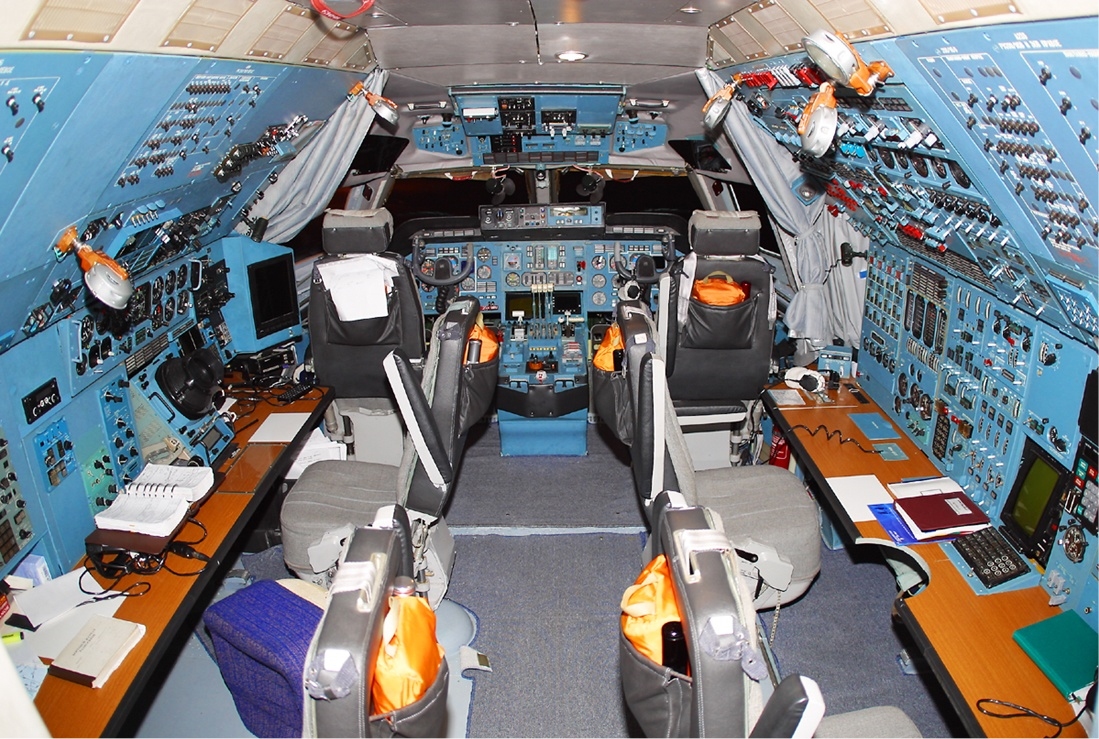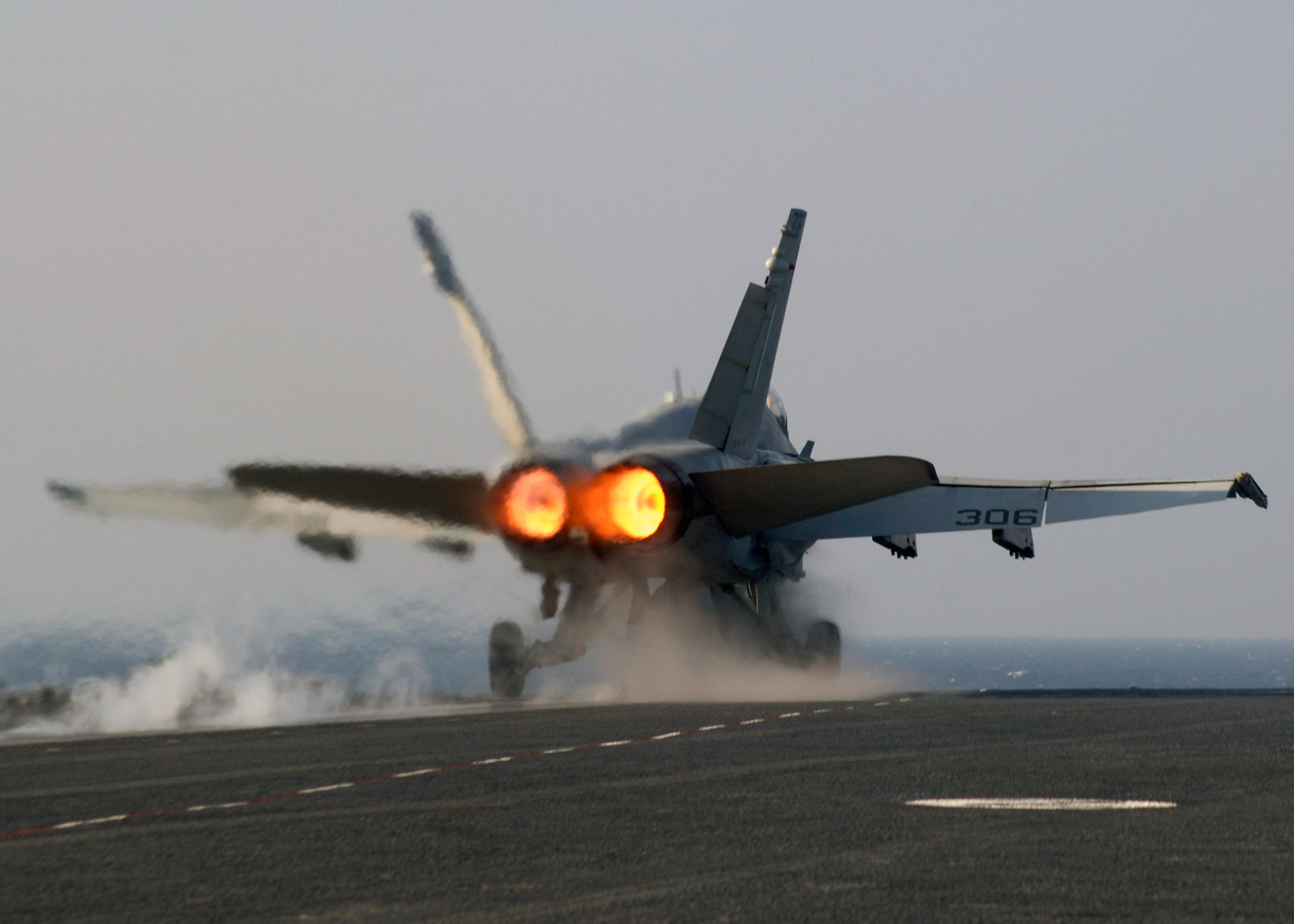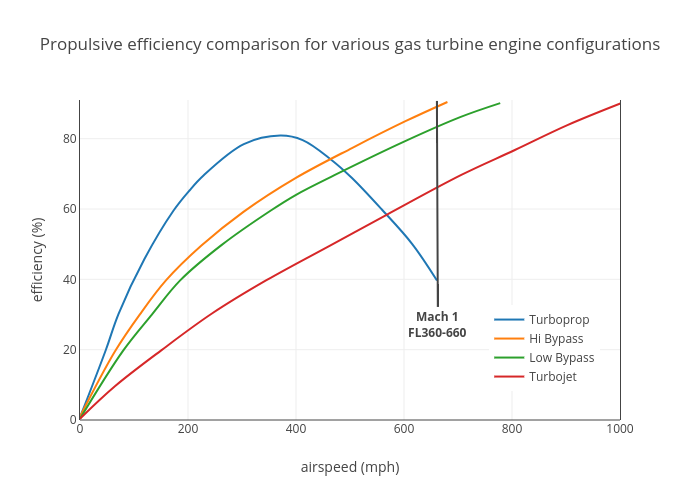|
Kuznetsov NK-32
The Kuznetsov NK-32 is an afterburning three-spool low bypass turbofan jet engine which powers the Tupolev Tu-160 supersonic bomber, and was fitted to the later model Tupolev Tu-144LL supersonic transport. It produces of thrust in afterburner. A non-afterburning variant known as NK-32 Tier 2 for Tu-160 and NK-65 will be used in the upcoming Russian bomber, PAK DA. NK-65 and a geared high-bypass turbofan variant PD-30, with a thrust of 30 tonnes (around 300 kN) has been proposed for use on new Russian wide-body airliners, as well as the upgraded Antonov An-124 Ruslan heavylifter. Applications * Tupolev Tu-160 * Tupolev Tu-144LL * Tupolev Tu-22M3M * Yakovlev Yak-43 The Yakovlev Yak-43 was a Soviet VTOL ( vertical takeoff and landing) fighter designed as the ground-based version of the ill-fated Yakovlev Yak-141, which failed to reach production. Like the Yak-141, the Yak-43 did not reach production.Gunston, ... * PAK DA Specifications See also References Externa ... [...More Info...] [...Related Items...] OR: [Wikipedia] [Google] [Baidu] |
WikiProject Aircraft
A WikiProject, or Wikiproject, is a Wikimedia movement affinity group for contributors with shared goals. WikiProjects are prevalent within the largest wiki, Wikipedia, and exist to varying degrees within sister projects such as Wiktionary, Wikiquote, Wikidata, and Wikisource. They also exist in different languages, and translation of articles is a form of their collaboration. During the COVID-19 pandemic, CBS News noted the role of Wikipedia's WikiProject Medicine in maintaining the accuracy of articles related to the disease. Another WikiProject that has drawn attention is WikiProject Women Scientists, which was profiled by '' Smithsonian'' for its efforts to improve coverage of women scientists which the profile noted had "helped increase the number of female scientists on Wikipedia from around 1,600 to over 5,000". On Wikipedia Some Wikipedia WikiProjects are substantial enough to engage in cooperative activities with outside organizations relevant to the field at issue. For e ... [...More Info...] [...Related Items...] OR: [Wikipedia] [Google] [Baidu] |
Antonov An-124 Ruslan
The Antonov An-124 Ruslan (; russian: Антонов Ан-124 Руслан, , Ruslan; NATO reporting name: Condor) is a large, strategic airlift, four-engined aircraft that was designed in the 1980s by the Antonov design bureau in the Ukrainian SSR, then part of the Soviet Union (USSR). The An-124 is the world's 2nd heaviest gross weight production cargo airplane and heaviest operating cargo aircraft, behind the destroyed one-off Antonov An-225 Mriya (a greatly enlarged design based on the An-124) and the Boeing 747-8. The An-124 remains the largest military transport aircraft in service. In 1971, design work commenced on the project, which was initially referred to as ''Izdeliye 400'' (''Product #400''), at the Antonov Design Bureau in response to a shortage in heavy airlift capability within the Military Transport Aviation Command (''Komandovaniye voyenno-transportnoy aviatsii'' or VTA) arm of the Soviet Air Forces. Two separate final assembly lines plants setup for the ar ... [...More Info...] [...Related Items...] OR: [Wikipedia] [Google] [Baidu] |
Kuznetsov Aircraft Engines
Kuznetsov, Kuznyetsov, Kuznetsoff, or Kouznetsov (masculine, russian: Кузнецов) or Kuznetsova (feminine, russian: Кузнецова) is the third most common Russian surname, an equivalent of the English "Smith" (derived from a Russian word ''kuznets'' that means ''blacksmith''). Men Artists and entertainers * Aleksandr Kuznetsov (other), several people * Aleksey Alekseevich Kuznetsov (born 1941), Soviet/Russian jazz guitarist and composer *Anatoly Borisovich Kuznetsov (1930–2014), Soviet/Russian actor * Anatoly Vasilievich Kuznetsov (1929–1979), Soviet writer, author of ''Babi Yar'' * I. Kuznetsov, Russian soloist with the Alexandrov Ensemble * Ivan Sergeyevich Kuznetsov (1867–1942), Russian architect * Mikhail Kuznetsov (actor) (1918–1986), Soviet actor * Nikolai Dmitriyevich Kuznetsov (1850–1929), Ukrainian portrait painter * Pavel Varfolomevich Kuznetsov (1878–1968), Russian painter * Sergey Kuznetsov, (born 1966), Russian writer * Yury Kuznetsov, (b ... [...More Info...] [...Related Items...] OR: [Wikipedia] [Google] [Baidu] |
General Electric F101
The General Electric F101 is an afterburning turbofan jet engine. It powers the Rockwell B-1 Lancer strategic bomber fleet of the USAF. In full afterburner it produces a thrust of more than . The F101 was GE's first turbofan with an afterburner. Development The F101 was developed specifically for the Advanced Manned Strategic Aircraft, which became the B-1A. The F101 powered the four development aircraft from 1970 to 1981. The B-1A was officially cancelled in 1977. However the flight test program continued. was awarded a contract to further develop the F101-102 engine variant. This turbofan eventually powered the B-1B from 1984, entering service in 1986. ...[...More Info...] [...Related Items...] OR: [Wikipedia] [Google] [Baidu] |
List Of Aircraft Engines
This is an alphabetical list of aircraft engines by manufacturer. 0–9 2si *2si 215 *2si 230 * 2si 430 * 2si 460 *2si 500 * 2si 540 * 2si 690 3W ''Source: RMV'' *3W 106iB2 *3W-110 *3W-112 *3W-170 *3W-210 *3W-220 A Abadal (Francisco Serramalera Abadal) *Abadal Y-12 350/400 hp ABC ''Source: Lumsden.'' * ABC 8 hp * ABC 30hp V-4 * ABC 45hp V-6 * ABC 60hp V-8 * ABC 85hp V-6 * ABC 100hp V-8 * ABC 115 hp * ABC 170hp V-12 * ABC 225hp V-16 *ABC Dragonfly *ABC Gadfly *ABC Gnat *ABC Hornet * ABC Mosquito *ABC Scorpion *ABC Wasp *ABC type 10 APU *ABC type 11 APU ABECO ''Source: RMV'' *ABECO GEM Aberg ''Source: RMV'' *Type Sklenar ABLE ''Source: RMV'', Able Experimental Aircraft Engine Co. (Able Experimental Aircraft Engine Co., Altimizer, Hoverhawk (US)) *ABLE 2275 *ABLE 2500 *ABLE VW x 2 Geared Drive Accurate Automation Corp *Accurate Automation AT-1500 *Accurate Automation AT-1700 Ace (Ace American Engr Corp, Horace Keane Aeroplane Co, North Beac ... [...More Info...] [...Related Items...] OR: [Wikipedia] [Google] [Baidu] |
Celsius
The degree Celsius is the unit of temperature on the Celsius scale (originally known as the centigrade scale outside Sweden), one of two temperature scales used in the International System of Units (SI), the other being the Kelvin scale. The degree Celsius (symbol: °C) can refer to a specific temperature on the Celsius scale or a unit to indicate a difference or range between two temperatures. It is named after the Swedish astronomer Anders Celsius (1701–1744), who developed a similar temperature scale in 1742. Before being renamed in 1948 to honour Anders Celsius, the unit was called ''centigrade'', from the Latin ''centum'', which means 100, and ''gradus'', which means steps. Most major countries use this scale; the other major scale, Fahrenheit, is still used in the United States, some island territories, and Liberia. The Kelvin scale is of use in the sciences, with representing absolute zero. Since 1743 the Celsius scale has been based on 0 °C for the freezing ... [...More Info...] [...Related Items...] OR: [Wikipedia] [Google] [Baidu] |
Kelvin
The kelvin, symbol K, is the primary unit of temperature in the International System of Units (SI), used alongside its prefixed forms and the degree Celsius. It is named after the Belfast-born and University of Glasgow-based engineer and physicist William Thomson, 1st Baron Kelvin (1824–1907). The Kelvin scale is an absolute thermodynamic temperature scale, meaning it uses absolute zero as its null (zero) point. Historically, the Kelvin scale was developed by shifting the starting point of the much-older Celsius scale down from the melting point of water to absolute zero, and its increments still closely approximate the historic definition of a degree Celsius, but since 2019 the scale has been defined by fixing the Boltzmann constant to be exactly . Hence, one kelvin is equal to a change in the thermodynamic temperature that results in a change of thermal energy by . The temperature in degree Celsius is now defined as the temperature in kelvins minus 273.15, meaning t ... [...More Info...] [...Related Items...] OR: [Wikipedia] [Google] [Baidu] |
Afterburner
An afterburner (or reheat in British English) is an additional combustion component used on some jet engines, mostly those on military supersonic aircraft. Its purpose is to increase thrust, usually for supersonic flight, takeoff, and combat. The afterburning process injects additional fuel into a combustor in the jet pipe behind (''i.e.'', "after") the turbine, "reheating" the exhaust gas. Afterburning significantly increases thrust as an alternative to using a bigger engine with its attendant weight penalty, but at the cost of increased fuel consumption (decreased fuel efficiency) which limits its use to short periods. This aircraft application of "reheat" contrasts with the meaning and implementation of "reheat" applicable to gas turbines driving electrical generators and which reduces fuel consumption. Jet engines are referred to as operating ''wet'' when afterburning and ''dry'' when not. An engine producing maximum thrust wet is at ''maximum power,'' while an engine ... [...More Info...] [...Related Items...] OR: [Wikipedia] [Google] [Baidu] |
Bypass Ratio
The bypass ratio (BPR) of a turbofan engine is the ratio between the mass flow rate of the bypass stream to the mass flow rate entering the core. A 10:1 bypass ratio, for example, means that 10 kg of air passes through the bypass duct for every 1 kg of air passing through the core. Turbofan engines are usually described in terms of BPR, which together with engine pressure ratio, turbine inlet temperature and fan pressure ratio are important design parameters. In addition, BPR is quoted for turboprop and unducted fan installations because their high propulsive efficiency gives them the overall efficiency characteristics of very high bypass turbofans. This allows them to be shown together with turbofans on plots which show trends of reducing specific fuel consumption (SFC) with increasing BPR. BPR is also quoted for lift fan installations where the fan airflow is remote from the engine and doesn't physically touch the engine core. Bypass provides a lower fuel consumption ... [...More Info...] [...Related Items...] OR: [Wikipedia] [Google] [Baidu] |
Yakovlev Yak-43
The Yakovlev Yak-43 was a Soviet VTOL (vertical takeoff and landing) fighter designed as the ground-based version of the ill-fated Yakovlev Yak-141, which failed to reach production. Like the Yak-141, the Yak-43 did not reach production.Gunston, 1997 The Yak-43 would have been the third-generation VTOL/STOL fighter, to follow and eventually replace the Yak-141.Gunston, 1997 Design and development Like the Yak-141, the Yak-43 would have had only a single main engine, as well as two dedicated vertical-lift engines. The main engine would have been based on the Samara NK-321 three-shaft augmented turbofan with a takeoff rating of . This same engine is used to power the Tupolev Tu-160 Blackjack bomber. The engine would have had a large air bleed leading to an auxiliary combustion chamber located in the nose, though a separate lift jet would have been retained.Gunston, 1997 A new integral layout use stealth technology which is a single whole of the fuselage with the wing. After the Yak- ... [...More Info...] [...Related Items...] OR: [Wikipedia] [Google] [Baidu] |





